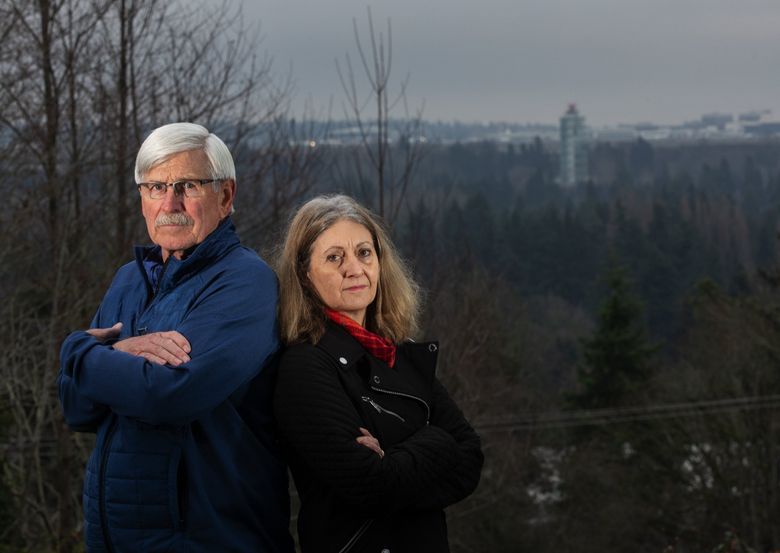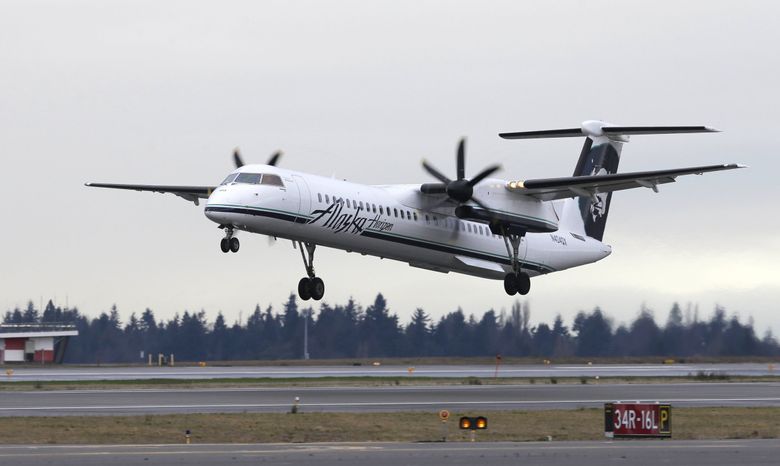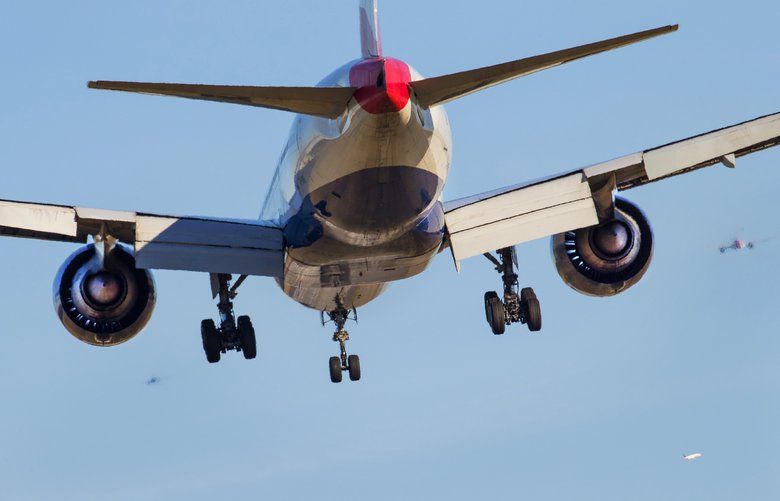

Plane noise, emissions, traffic: The growing pains of a bustling Seattle-Tacoma International Airport have long agitated communities near and far, from Beacon Hill to Shoreline and Medina.
But few cities have mobilized to the extent of Burien, just west of the airport.
The city has twice sued the Federal Aviation Administration (FAA), most recently in June 2018, alleging that the agency responsible for controlling air traffic didn’t properly consider the environmental impact of routing some planes in a narrow band directly over the city.
Now, residents suffering under crowded skies have a court ruling in their favor.
Late last month the Ninth Circuit Court of Appeals directed the FAA to go back to the drawing board on the Burien flight path.
The agency will need to “consider the potential cumulative impact of all relevant reasonably foreseeable future actions” — including a $4.5 billion set of projects to accommodate an additional 40,000 takeoffs and departures a year at Sea-Tac by 2027.
The effect of the ruling on the city’s most recent suit goes well beyond Burien, said Steve Edmiston, an activist who is against Sea-Tac expansion.
Other jurisdictions affected by plane noise and emissions, including his hometown of Des Moines just south of the airport, may be able to use Burien’s tactics as a blueprint to advocate for more stringent review of flight paths over their homes.
“It feels like a ‘finally’ moment,” he said. “We’re at a tipping point with Sea-Tac. We can’t just keep growing. Finally! We’re going to look at history, where we are and where we’re going.”
The FAA declined comment except to say the agency is reviewing the court’s decision.
But the ruling has halted use of a flight path that left some residents sleepless and at their wits’ end.
When Debi Wagner bought her Burien home in 2002, she expected to hear a certain amount of plane noise: The house was two miles west of Sea-Tac.
But in the past three years, the low roar from the airport has become “unbearable,” the former Burien city councilmember said.
“It’s not like living next to the ocean,” she said. “It’s a very deep and disturbing rumble that penetrates your body. It shakes your bones.”
She installed a decibel reader on her cellphone; when she’s woken in the middle of the night by planes flying over her house, she watches the numbers tick up to 50, 60, 70 decibels — the level of a vacuum cleaner.
At one point last year, during what she described as a “three-week period of constant noise,” Wagner was getting so little sleep she stopped going to work.
One specific plane
Part of the problem is that the number of planes flying in and out of Sea-Tac has risen by nearly 33% since 2010. Last year nearly 50 million passengers came through the airport, the eighth-busiest in the U.S.
But a good portion of the plane noise waking Wagner in the night came from one very specific plane: Horizon Air’s 76-seat Bombardier Q400, a turboprop ferrying passengers to nearby destinations including Portland and Boise.
In July 2016, the FAA began routing many of the turboprop planes directly over Burien almost as soon as they took off.
The new route was intended to accommodate the increasing number of big jets by moving the smaller planes out of Sea-Tac’s airspace more quickly.
The effect, though, was to concentrate “low-flying turboprops in a narrow band directly over Central Burien,” according to the city’s suit.
In a statement, a spokesperson for Alaska Air Group, which owns Horizon Air, said that while “there are continuing challenges to minimize flight delays for our guests at Sea-Tac,” the FAA is the ultimate decision-maker on air traffic issues. The company is committed to ensuring safety and efficiency while mitigating noise impacts, the statement said.
Planes generally take off into the wind. The new route takes effect when the wind blows from the north, which it does about 35% of the time.
On those days, 35-40 turboprops pass directly over Burien, generally at altitudes under 3,000 feet.
“We’ve seen them cross First Avenue at 1,200 feet above ground level,” about twice the height of the Space Needle, said retired Alaska Airlines pilot Larry Cripe, who together with Wagner and other concerned residents helped launch the city’s first suit against the FAA in late 2016.
That lawsuit led to a temporary halt of the flight pattern, until the FAA issued a document explaining it didn’t believe the turboprops’ new route had any adverse effects on Burien.
Bolstered by that justification, the small planes began flying over Burien again in June 2018.
Almost immediately, the city filed another suit alleging the FAA hadn’t considered the cumulative impact of the noise from the turboprops on Burien residents, in addition to the noise from increasing jet traffic more generally.
The appeals court agreed last month.
“The FAA acted arbitrarily and capriciously by failing to consider all ‘reasonably foreseeable’ future actions at Sea-Tac in its analysis,” the court ruled. “Specifically … it failed to even mention future actions taking place at Sea-Tac itself, even to dismiss them as not reasonably foreseeable.”
The FAA’s “most notable” failure, the court ruled, was not to consider the impact of a $4.5 billion package of projects to expand Sea-Tac, part of what’s called the Sustainable Airport Master Plan — a plan developed and funded in part by the FAA.
The expansion projects include building a second terminal, 19 more gates and more cargo handling facilities.
When the FAA examined the impact of the turboprop route, it looked at the new route in isolation — “a drop of water in a swimming pool,” Wagner said.
“But the 33% increase in air traffic, all the other environmental impacts in the future, were ignored,” she said. “You have to consider that in the realm of everything else going on.”
That includes plane noise, emissions and traffic associated with the rising number of flights at Sea-Tac.
City Attorney Lisa Marshall, who argued the case before the court, said she’s not personally bothered by the turboprops passing over the city. What she notices is a major slowdown on highways around the airport.
“It doesn’t matter whether I’m getting out of a council meeting at 11 p.m. or leaving at 5 p.m., the traffic eastbound is at a standstill,” she said.
A wide swath of Burien residents, though, were affected by noise from the turboprops, she said.
The flight path, she said, “was a huge impact to our citizens, and a change that was done with no environmental review.”
The Ninth Circuit’s decision wasn’t a total win for communities around the airport: The appeals court said the ruling shouldn’t be used as precedent in future cases.
But, Edmiston said, the ruling is still “illustrative.” And it could help other communities frame arguments about the impact of the Sustainable Airport Master Plan, which is currently in environmental review.
The turboprops over Burien, Cripe said, are “almost insignificant” compared with that expansion plan.
“The amount of growth at SeaTac has been so substantial,” he said. “These projects have been segmented in one after another, and all that growth has not been subject to full consideration.”
This article has been updated with a statement from Alaska Air Group.
